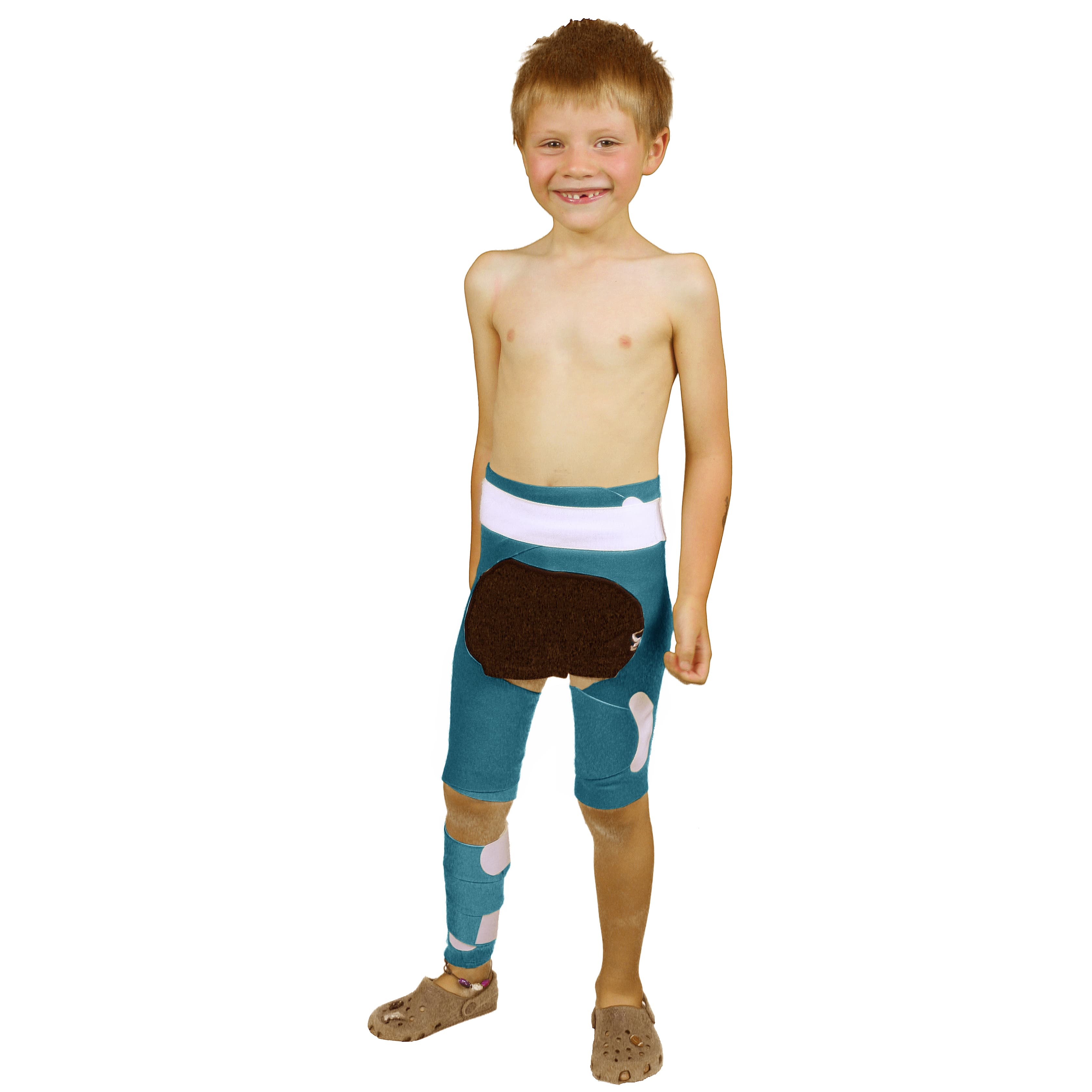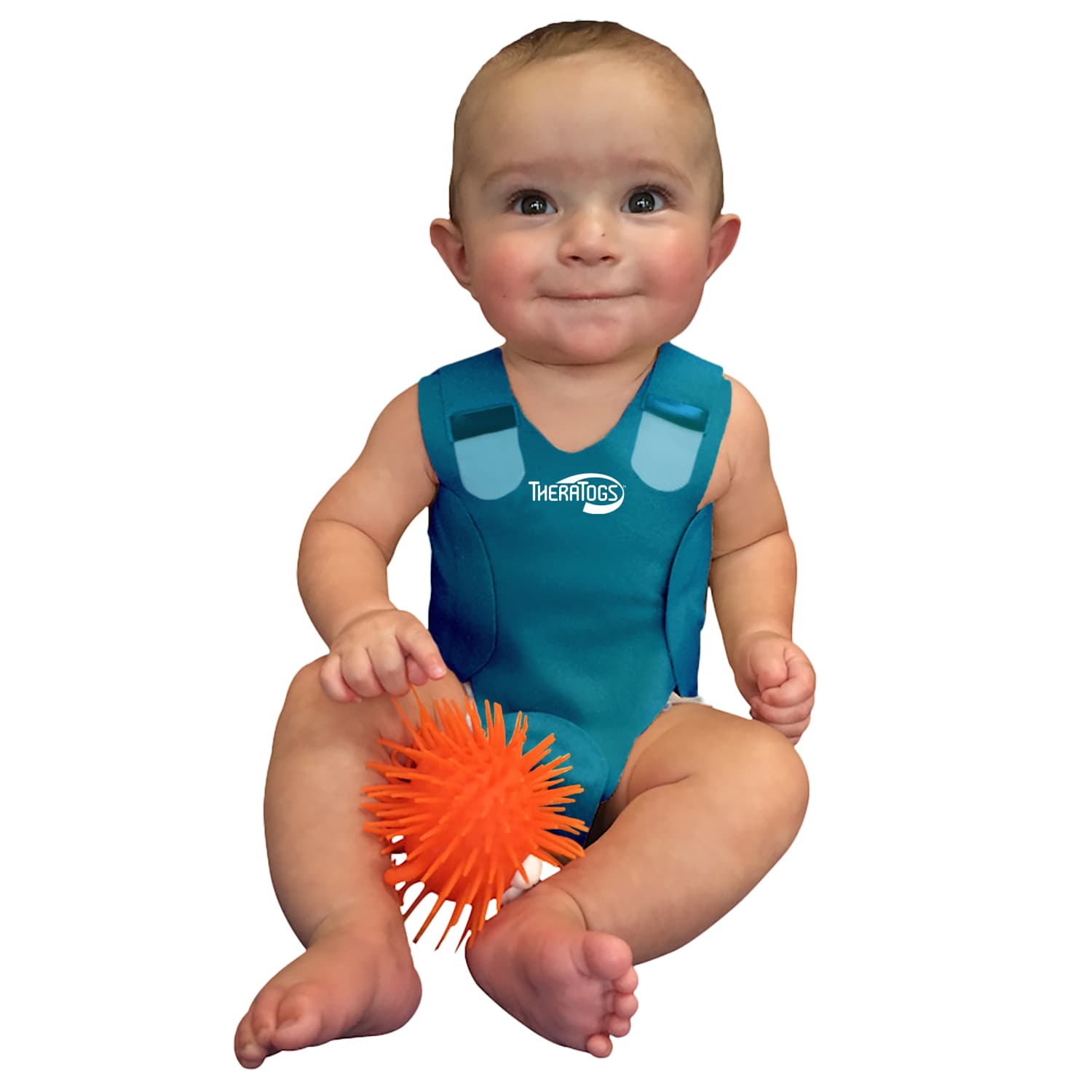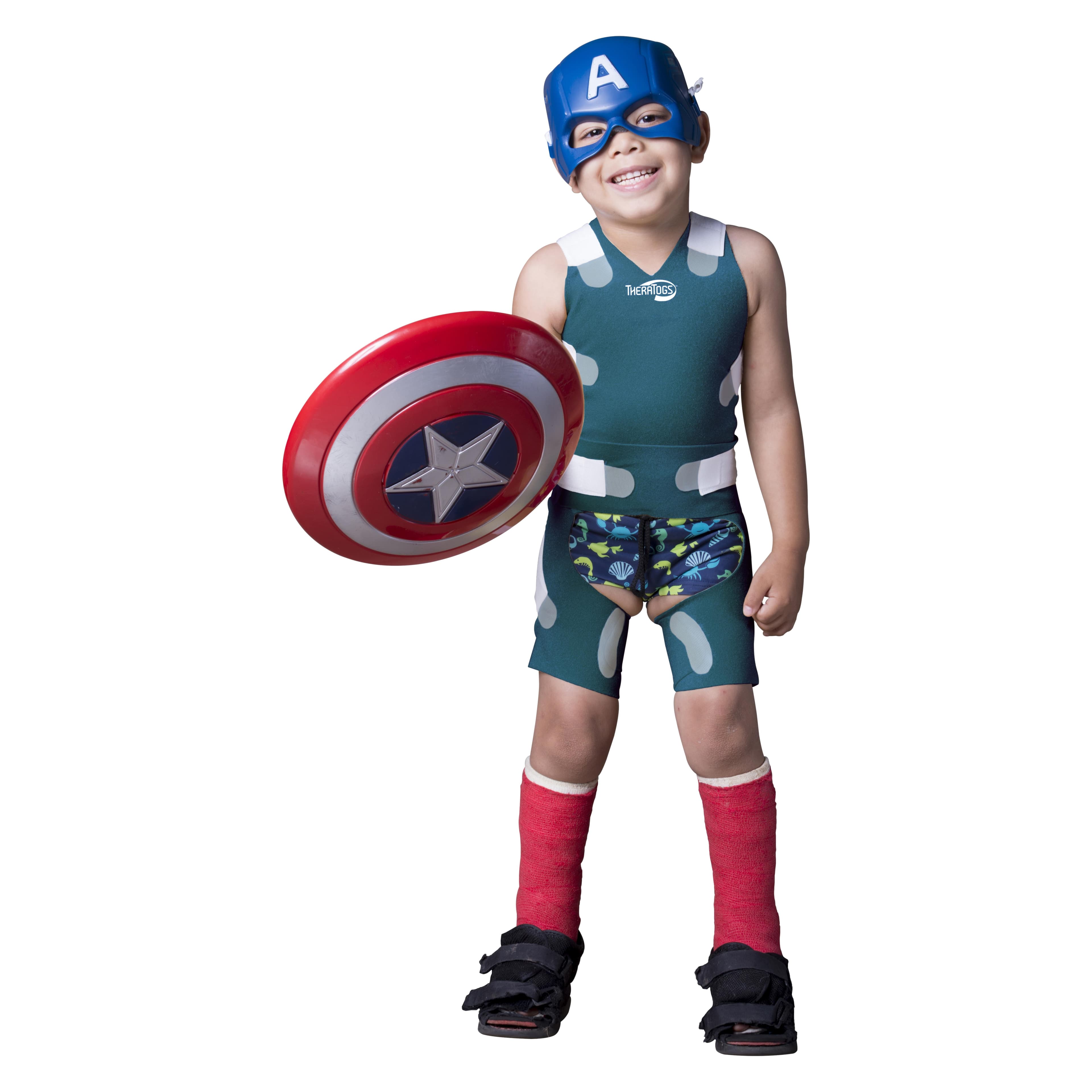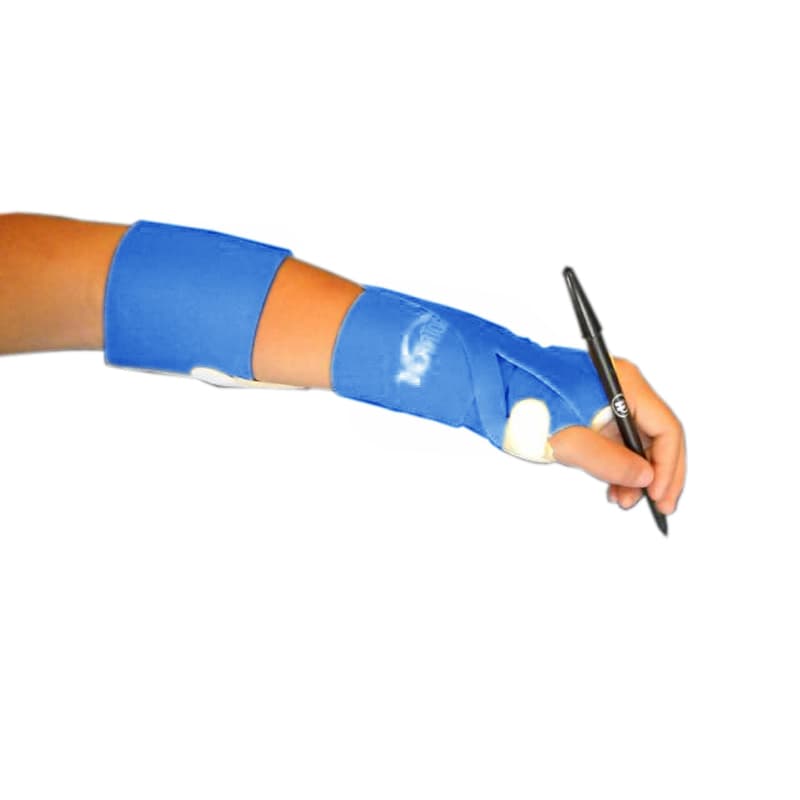
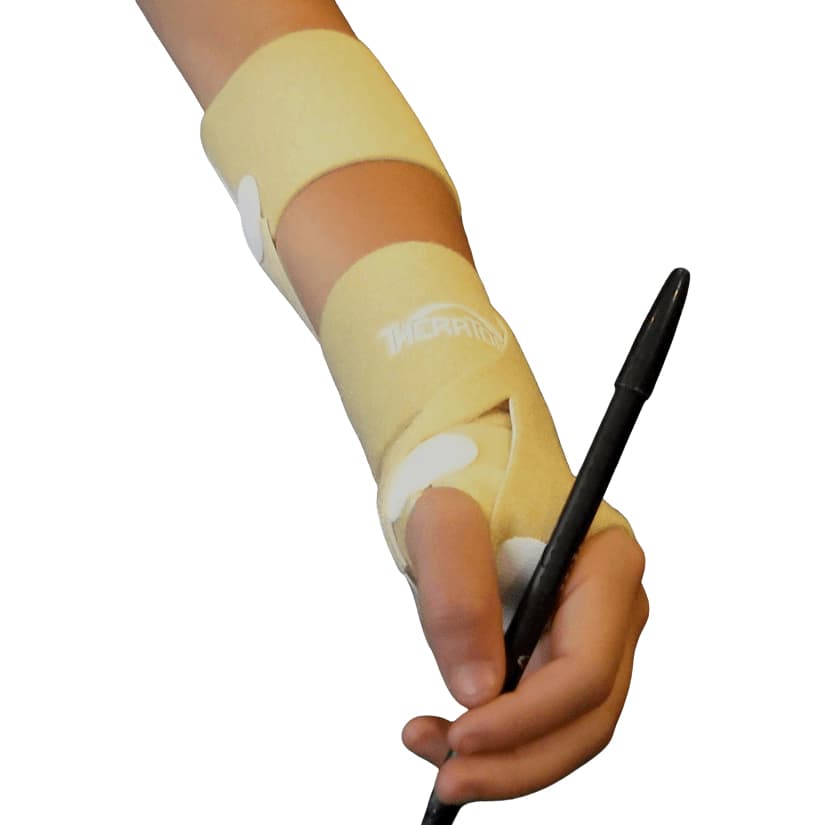
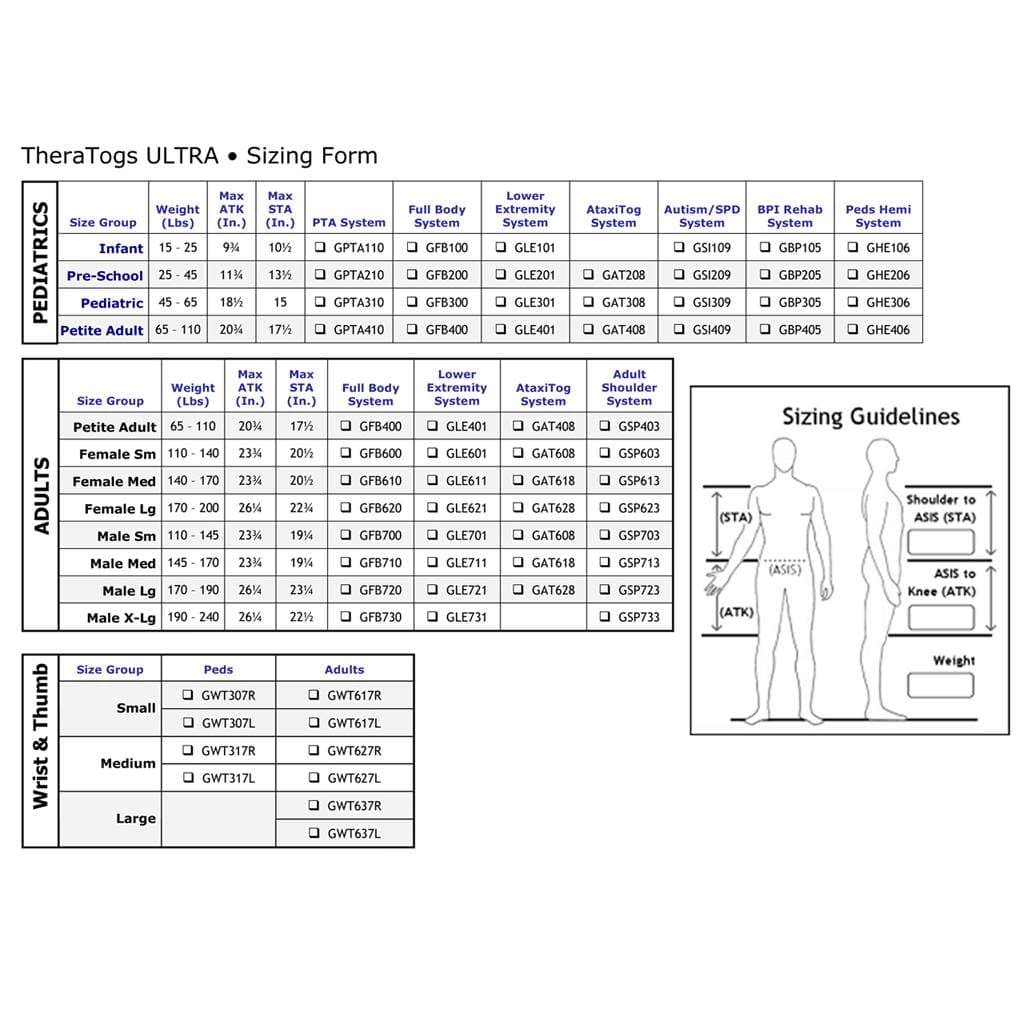

TheraTogs ULTRA Wrist and Thumb Positioning System
Earn Loyalty Points
+155Buy more to unlock extra rewards!
PayPal Pay Later
Description
TheraTogs ULTRA Wrist & Thumb System is the most versatile and flexible system, enhancing wrist and thumb stability. The hook-sensitive wrist and thumb unit is available in pediatric sizes for the left or right hand. The Wrist & Thumb System is comprised of foam-backed material that is both comfortable and effective for supporting and preserving joint alignment. It can be used as a standalone functional alignment aid or to extend the PTA from the wrist, thumb, or elbow to the hand.
It effectively supports and maintains the joint position gains made with manual adjustment. If you can correct wrist and thumb alignment with your hands without using force, you can use the TheraTogs Wrist & Thumb System to carry over those in-clinic adjustments and comfortably position your client's day-to-day activities in corrected functional alignment.
Indications:
- Palmar arch modulation deficits
- Proximal limb joint control deficits
- Increased ulnar deviation at the wrist
- Soft tissue extensibility at wrist or thumb
- Flexible wrist-flexed posture, wrist or carpometacarpal joint instability
Features:
- Restore the palmar arch
- Reduce flexible ulnar deviation
- Improves wrist and thumb stability
- Relieves pain associated with mal-alignment
- Assists in reducing forearm pronation and supination, elbow flexion or extension
Benefits:
- Extend wrist control to a TheraTogs garment system worn for the arm, shoulder, or trunk.
- Unmatched versatility – apply exactly the pronation or supination force vectors your client needs, and change them as she/he improves.

Specifications
| Model No. | Size group |
| GWT307R | Small pediatric right hand |
| GWT307L | Small pediatric left hand |
| GWT317R | Medium/large pediatric right hand |
| GWT317L | Medium/large pediatric left hand |
Warranty
- The manufacturer warrants that the components will keep their shape and documented function for a minimum of six months from first date of use.
- If any part or component fails these standards, manufacturer will at its discretion replace it free of charge.
- Parts under warranty will be covered at no cost. Any labor cost for service under warranty is not covered as per our terms of sale.
- Standard Manufacturer Terms & Conditions are applicable for Warranty of this product.
Please call us for specific details.
Return
- TheraTogs are FDA Class I medical device worn next to the skin by individual users, purchases of TheraTogs are not refundable.
- Opened but unused products may be returned for a refund of the purchase price, minus the appropriate restocking fee up to $35 and applicable taxes.
- Unopened products may be returned for a full refund of the purchase price (shipping & handling not included).
- Returns are to be made with a valid Return Merchandise Authorization (RMA) number only, unauthorized returns will not be accepted.
- If you purchase the wrong size and wish to exchange your purchase for another set of the correct size, you may do so by returning it in excellent condition, and unaltered in any way.
- You are responsible for any additional shipping costs, and for any cost differential between the original and exchanged items.
- If your return is not due to any manufacturing defect then the original shipping cost and credit card/paypal processing fee will be deducted from the total refund
- The manufacturer will replace defective/non-working products at no charge when returned in accordance with this policy. Otherwise, all returns are subject to restocking charge, as determined by contract.
- Standard Manufacturer Terms & Conditions are applicable for Return Policy of this product.
Please call us for specific details.
FAQs
- Ataxia
- Hypotonia
- Flexible joint deviations
- Muscle recruitment problems
- Postural mal-alignment
- Diplegia in childhood
- Sensory integration/processing issues
- Athetosis
- Hemiplegia
- Pain due to muscle imbalances
- In-toed gait
- Autism
- Joint laxity
- Out-toed gait
- Attention deficit disorders
There is no generic or standard wearing schedule; it depends on what the clinician and the caregivers determine is the best for the patient, and what's most realistic for the patient's circumstances. For most wearers, it's best to start slow, wearing only the garments for a week or so, and then adding strapping if/as needed. (In many cases, TheraTogs cause the patient to use muscles that have been underused, so fatigue is to be expected.)
TheraTogs have been registered with the U.S. Federal Food and Drug
Administration as a Class I Medical Device. Thera Togs systems are intended
to be applied under the supervision of a licensed, healthcare practitioner.
Class I devices are subject to the least regulatory control because they
present a minimum of potential for harm to the user. TheraTogs were
determined to be a Class I device because they are worn on the outside of
the body and have negligible potential for harm.
Resources
Description
TheraTogs ULTRA Wrist & Thumb System is the most versatile and flexible system, enhancing wrist and thumb stability. The hook-sensitive wrist and thumb unit is available in pediatric sizes for the left or right hand. The Wrist & Thumb System is comprised of foam-backed material that is both comfortable and effective for supporting and preserving joint alignment. It can be used as a standalone functional alignment aid or to extend the PTA from the wrist, thumb, or elbow to the hand.
It effectively supports and maintains the joint position gains made with manual adjustment. If you can correct wrist and thumb alignment with your hands without using force, you can use the TheraTogs Wrist & Thumb System to carry over those in-clinic adjustments and comfortably position your client's day-to-day activities in corrected functional alignment.
Indications:
- Palmar arch modulation deficits
- Proximal limb joint control deficits
- Increased ulnar deviation at the wrist
- Soft tissue extensibility at wrist or thumb
- Flexible wrist-flexed posture, wrist or carpometacarpal joint instability
Features:
- Restore the palmar arch
- Reduce flexible ulnar deviation
- Improves wrist and thumb stability
- Relieves pain associated with mal-alignment
- Assists in reducing forearm pronation and supination, elbow flexion or extension
Benefits:
- Extend wrist control to a TheraTogs garment system worn for the arm, shoulder, or trunk.
- Unmatched versatility – apply exactly the pronation or supination force vectors your client needs, and change them as she/he improves.

Specifications
| Model No. | Size group |
| GWT307R | Small pediatric right hand |
| GWT307L | Small pediatric left hand |
| GWT317R | Medium/large pediatric right hand |
| GWT317L | Medium/large pediatric left hand |
Warranty
- The manufacturer warrants that the components will keep their shape and documented function for a minimum of six months from first date of use.
- If any part or component fails these standards, manufacturer will at its discretion replace it free of charge.
- Parts under warranty will be covered at no cost. Any labor cost for service under warranty is not covered as per our terms of sale.
- Standard Manufacturer Terms & Conditions are applicable for Warranty of this product.
Please call us for specific details.
Return
- TheraTogs are FDA Class I medical device worn next to the skin by individual users, purchases of TheraTogs are not refundable.
- Opened but unused products may be returned for a refund of the purchase price, minus the appropriate restocking fee up to $35 and applicable taxes.
- Unopened products may be returned for a full refund of the purchase price (shipping & handling not included).
- Returns are to be made with a valid Return Merchandise Authorization (RMA) number only, unauthorized returns will not be accepted.
- If you purchase the wrong size and wish to exchange your purchase for another set of the correct size, you may do so by returning it in excellent condition, and unaltered in any way.
- You are responsible for any additional shipping costs, and for any cost differential between the original and exchanged items.
- If your return is not due to any manufacturing defect then the original shipping cost and credit card/paypal processing fee will be deducted from the total refund
- The manufacturer will replace defective/non-working products at no charge when returned in accordance with this policy. Otherwise, all returns are subject to restocking charge, as determined by contract.
- Standard Manufacturer Terms & Conditions are applicable for Return Policy of this product.
Please call us for specific details.
FAQs
- Ataxia
- Hypotonia
- Flexible joint deviations
- Muscle recruitment problems
- Postural mal-alignment
- Diplegia in childhood
- Sensory integration/processing issues
- Athetosis
- Hemiplegia
- Pain due to muscle imbalances
- In-toed gait
- Autism
- Joint laxity
- Out-toed gait
- Attention deficit disorders
There is no generic or standard wearing schedule; it depends on what the clinician and the caregivers determine is the best for the patient, and what's most realistic for the patient's circumstances. For most wearers, it's best to start slow, wearing only the garments for a week or so, and then adding strapping if/as needed. (In many cases, TheraTogs cause the patient to use muscles that have been underused, so fatigue is to be expected.)
TheraTogs have been registered with the U.S. Federal Food and Drug
Administration as a Class I Medical Device. Thera Togs systems are intended
to be applied under the supervision of a licensed, healthcare practitioner.
Class I devices are subject to the least regulatory control because they
present a minimum of potential for harm to the user. TheraTogs were
determined to be a Class I device because they are worn on the outside of
the body and have negligible potential for harm.

